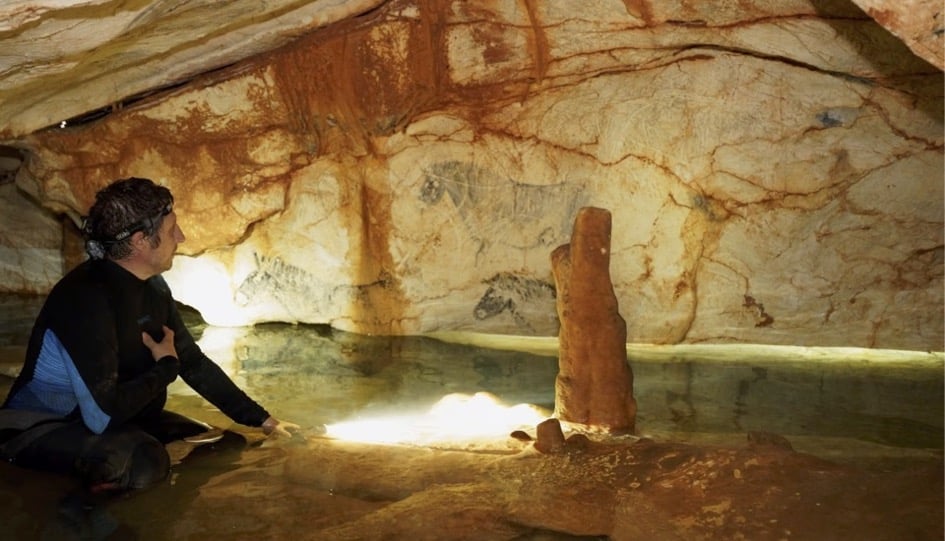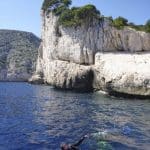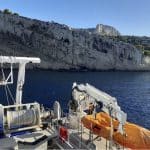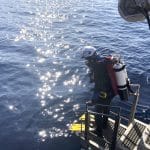This article studies air circulation in the Cosquer cave (Marseille - France), a semi-drowned decorated cave where some of the engravings and paintings from the Upper Palaeolithic are temporarily saved from rising sea levels. By studying air pressure variations in this cave, we can calculate the volume of connected voids and the air renewal rate. In addition, we can estimate the air permeability of the karstic rock mass, a measurement that is rarely possible in situ, and explain why the water level remains below sea level.
The conservation of decorated caves is highly dependent on the flow of air in the karstic network and through the surrounding rock. Air flows are governed by the pressure gradient and influenced by the shape of the karstic conduits and the permeability of the carbonate rock mass.
The Cosquer cave is an Upper Palaeolithic painted cave, half-submerged in coastal karst, where preservation also depends on water levels connected to the sea.
Hydroclimatic data, such as air pressure, air temperature and water level inside and outside the cave, were measured over several years in order to identify the main processes governing variations in water level, air flow and air renewal. The data show unusual behaviour for a karst: the air pressure in the karst is almost always higher than atmospheric pressure.
As a result, the water level in the cave is below sea level. Daily variations in the tide allow us to estimate the volume of the cave above water level. Although the air in the cave is confined by the rock and seawater, there are also external air intakes during short pressurisation events linked to waves, which can produce and force air bubbles to flow along the open underwater fissures or karstic conduits inside the massif.
In addition, the effective permeability of carbonate rocks to air at the scale of the massif is deduced from the decrease in air pressure in the cave during the summer season by applying Darcy's law in a partially saturated environment.
Six years of data show that permeability varies from year to year and as a function of cumulative rainfall during spring and summer. The driest years are correlated with higher permeability, a more rapid decrease in air pressure in the cave and a more rapid rise in the water level.
In the future, in the context of climate change, a disruption in the permeability of the rock is therefore expected in caves close to the surface, which will have an impact on air flows in decorated caves and could alter their fragile hydroclimatic stability.
Pellet, H., Arfib, B., Henry, P., Touron, S., and Gassier, G.: Mesoscale permeability variations estimated from natural airflows in the decorated Cosquer Cave (southeastern France), Hydrol. Earth Syst. Sci. 28, 4035-4057, https://doi.org/10.5194/hess-28-4035-2024, 2024.
A collaboration between theAix-Marseille Universityon historical monuments research laboratory (Ministry of Culture), the CNRS and the Direction Régionale des Affaires Culturelles.
Publications
. Hydrol. Earth Syst. Sci. 28, 4035-4057, 2024.
FOCUS Hugo PELLET
Contact






